Crescent Symbolism in Culture and Dubai Real Estate
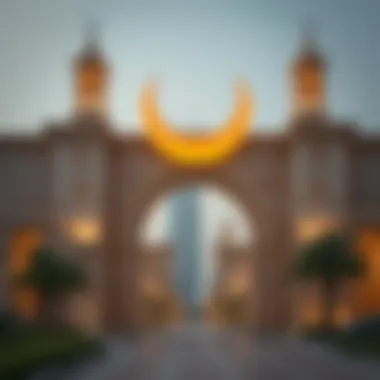
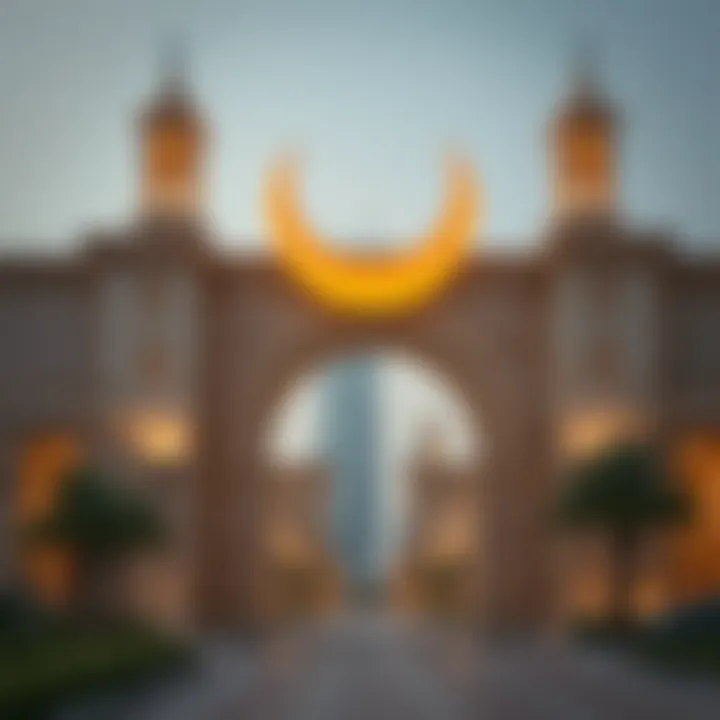
Intro
The crescent shape, often recognized as a symbol of enlightenment and transformation, finds its place at the heart of diverse cultures around the globe. In urban settings like Dubai, the crescent unfolds stories that are embedded in architectural designs, city planning, and investment opportunities. The significance of the crescent transcends mere aesthetics, playing a pivotal role in the way individuals and communities engage with their surroundings.
In this article, we will journey through several layers of the crescent's influence both culturally and within the realm of real estate. From its rich symbolism in art and tradition to its manifestation in the modern architecture of Dubai, the crescent stands as a bridge connecting different narratives. This exploration not only sheds light on cultural values but also highlights practical implications for those involved in Dubai's dynamic real estate market.
Understanding how this emblematic form molds urban life can provide deeper insights for investors, homeowners, renters, and expatriates alike. We will delve into the current trends in the Dubai real estate market, identify emerging neighborhoods, and discuss prominent investment strategies. This examination seeks to equip readers with the knowledge needed to navigate this vibrant sector where investment opportunities meet cultural depth.
Preface to the Crescent Symbol
The crescent, a shape reminiscent of a sliver of the moon, carries immense significance across various spheres, particularly in culture and real estate. This symbol serves as more than a mere decorative element; it's a powerful emblem of identity, history, and aspiration. The crescent's importance lies not just in its aesthetic appeal but in its ability to evoke feelings of connection to tradition and cultural narratives.
Understanding the crescent's role is essential, especially within a cosmopolitan hub like Dubai, where the blend of modernity and tradition creates a unique tapestry. In urban planning, the crescent can symbolize growth, continuity, and respect for heritage while paving the way for innovative developments. Investors and realtors alike have much to gain from understanding this symbol's implications in real estate markets, as properties with such iconic representations often fetch heightened interest.
Historical Context
The crescent's journey through history is both fascinating and rich. Used in various cultures, it often conveys themes of change, renewal, and guidance. In the ancient world, including various Mesopotamian civilizations, the crescent was seen as a vehicle of divine representation, often linked to deities. For example, the moon god Nanna in Sumerian beliefs was often depicted with a crescent moon, emphasizing the connection to time and cycles.
As time marched on, the crescent began to take on deeper meanings in Islamic culture, becoming a defining symbol of the faith. The addition of the star to the crescent notably embodies enlightenment and guidance, which resonates deeply during religious celebrations. Thus, its historical significance is not just anchored in visual representation but also in spiritual guidance and cultural identity.
Cultural Significance
The crescent's cultural ramifications vanish far beyond its historical roots. In many contexts, it symbolizes hope and tranquility. It has found its way into art, literature, and architecture, often serving to unify diverse narratives under a common emblem. From ornate decorations in mosques to contemporary designs in urban landscapes, the crescent expresses cultural heritage while adapting to modern expressions.
Moreover, in Dubai, the crescent's presence can be seen in public art and significant structures, serving as a reminder of the city’s historical foundations amidst rapid development. This duality of old and new attracts locals and expatriates, creating a unique sense of identity.
Ultimately, as cities evolve, the crescent symbolizes not only past narratives but also future aspirations. It encapsulates the journey of communities, reminding us of our roots while guiding us forward into new horizons. Thus, understanding the crescent’s rich tapestry is crucial for anyone interested in the cultural and real estate dynamics in regions influenced by this iconic symbol.
Crescent in Islamic Tradition
The crescent holds a profound position within Islamic tradition, serving as both a visual and spiritual representation that intertwines with the faith's teachings. This section aims to explore the intricacies of its symbolic power and societal role. The crescent is not merely an aesthetic element; it symbolizes guidance, light in darkness, and the cyclical nature of life. In a cultural context like Dubai, a city that burgeons with diversity, the crescent serves as a reminder of the Islamic heritage even amidst rapid modernization.
Religious Symbolism
The crescent moon, or "hilal," is emblematic in Islam, capturing the essence of hope and renewal. It is prominently tied to the beginning of each lunar month in the Islamic calendar, which underscores its essential function in religious observance. For many Muslims, it signifies the start of Ramadan, a month devoted to prayer, fasting, and reflection. When sighted, the crescent becomes a herald of community gatherings and celebrations, as people come together under the glow of this natural phenomenon.
Beyond its practical uses, the crescent possesses a deeper spiritual significance. It embodies the connection between the celestial and terrestrial realms. In this regard, the moon is considered a travel guide in the darkness of night, steering individuals toward their destinies. Such associations leave an indelible mark on Muslims, reinforcing the notion that faith illuminates life's path.
"The crescent moon teaches us that no matter the darkness, light always returns."
This symbolism resonates powerfully within Islamic art and architecture. Many mosques employ the crescent in their design, serving as a beacon of faith. Indeed, landmarks like the Sultan Ahmed Mosque in Istanbul feature grand crescents atop their domes, radiating both historical and cultural significance.
Festivities and Calendar
The festival calendar in Islamic culture is intrinsically linked to the phases of the crescent moon. The sighting of the hilal marks important religious events such as Eid al-Fitr and Eid al-Adha. Each festival is a grand celebration that brings communities together, harnessing the spirit of unity and joy encapsulated within the crescent’s presence.
Specifically, Eid al-Fitr takes place at the end of Ramadan, celebrating the completion of a month of fasting and devotion. The night of the crescent's sighting is jubilant, filled with prayers, laughter, and shared meals. It inspires a spirit of generosity where believers engage in acts of charity, reinforcing the culture of giving that is central to the faith.
Moreover, with every new moon, many Muslims glance skyward, reflecting on the renewal that each cycle embodies. The connection between the lunar phases and daily life extends to calendar scheduling, which affects everything from daily prayers to agricultural seasons, underscoring the crescent's omnipresence in Islamic culture.
In cities like Dubai, this rich confluence of tradition and modernity is palpable. Rather than falling by the wayside, these celebrations accentuate the city's diverse cultural fabric, inviting expatriates and locals alike to engage in the colorful tapestry of life that the crescent symbolizes.
Thus, the crescent transcends mere astronomy; it serves as a living emblem of faith, traditions, and contemporary identity in the Islamic world.
The Crescent in Architecture
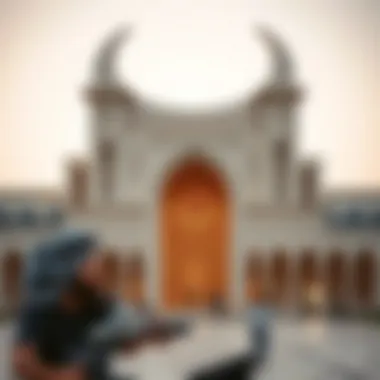
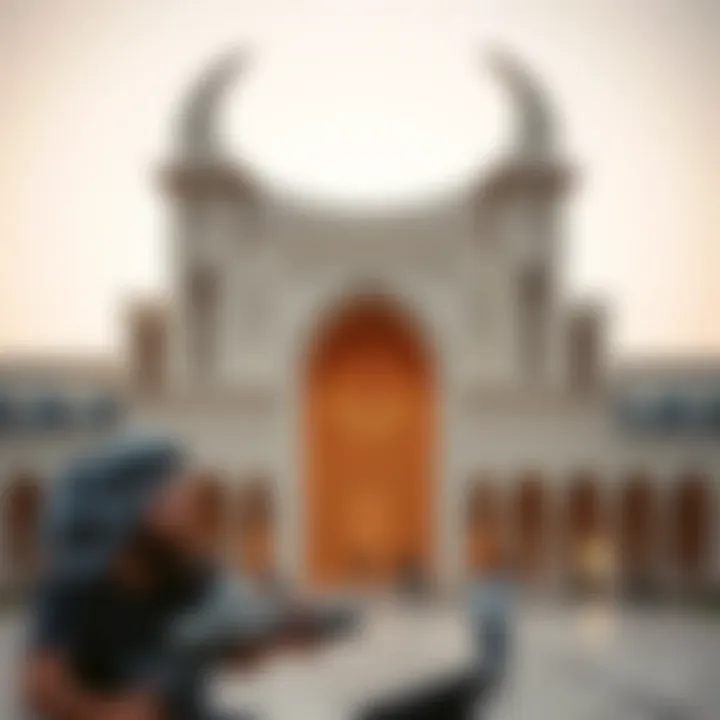
The crescent, a shape often associated with growth and new beginnings, occupies a unique place in architectural design. Its significance extends beyond mere aesthetics or spirituality; it acts as a bridge between the past and present, serving varied functions in urban landscapes, particularly in a fast-evolving city like Dubai.
Understanding the role of the crescent in architecture provides insight into both cultural expression and practical design considerations. This multifaceted symbol can influence the flow of space, light, and even the emotions of the people who inhabit these structures. The interplay between form and function through the crescent is vital, adding layers of meaning to built environments.
Iconic Structures Featuring the Crescent
Architecture has long utilized the crescent shape in various forms, often representing cultural identities or religious connections. In Dubai, examples abound where this symbol has been integrated into contemporary and historic structures alike.
- The Crescent Moon Tower: A remarkable blend of traditional Islamic motifs and modern design, this tower not only serves a functional purpose but also acts as a beacon of cultural significance. The crescent silhouette stands out against the skyline, weaving together stories of history and aspiration.
- The Sheikh Zayed Grand Mosque: Though technically located in Abu Dhabi, its design informs nearby architectural trends. The mosque's crescents atop its domes embody purity and the heavenly connection vital in Islamic practice. Its grandeur inspires the architectural language used throughout the Emirates.
The way these structures engage with the crescent shape tells tales of aspiration, tradition, and continuity. Their designs invite viewers to contemplate the rich cultural narratives while also considering the practicalities of space and environment.
Design Elements and Aesthetics
In architectural design, the crescent is not just a shape; it influences aesthetics, guiding light, sightlines, and even acoustics within a space. This segmented crescent form can drastically change the perception of an area, prompting feelings of openness or closure based on its implementation.
- Curvilinear Form: The smooth edges of crescent designs facilitate a flow that often feels more organic compared to angular counterparts. This can create inviting public spaces, engaging passersby in a way that sharp corners might not.
- Light Play: Structurally, the crescents are adept at manipulating light. Arched designs can cast fascinating shadows throughout the day, adding dynamism and depth to a building’s facade.
- Cultural Allegory: Often decorators embed crescents into motifs that speak to local culture. The most striking designs reflect Islamic values or local folklore, narrating stories through artistic interpretation.
Architecture, enhanced by the crescent form, shapes experiences and emotions, going beyond the mere physical space. Many say that living within or near a crescent-inspired development resonates with a sense of community and identity, a cornerstone of urban life in Dubai.
The crescent's integration into urban planning is a testament to the blending of tradition with modernity, creating spaces that are both functional and deeply resonant.
Crescent and Urban Planning in Dubai
The crescent is not just a mere shape; it carries profound implications in urban planning, especially in a city as innovative and diverse as Dubai. This section aims to highlight the essential interplay between the crescent symbol and its influence on city layout and modern development. Understanding these connections unveils the intricate balance between cultural identity and practical urban architecture.
Influence on City Layout
The planning of Dubai's urban expanse has been notably influenced by the crescent symbol, which resonates throughout the city’s neighborhoods and public spaces. The crescent is more than just an icon; it shapes how spaces are arranged and functions within the urban fabric. The crescent's curvature often inspires street layouts, park designs, and even residential areas. In areas like the Dubai Marina, the waterfront developments mimic this flowing shape, creating an inviting atmosphere that promotes exploration and social interaction.
Moreover, the crescent serves as a guiding motif in zoning regulations, encouraging developers to respect sight lines and incorporate open spaces that reflect the organic curves of the symbol. This not only enriches the aesthetic appeal but also fosters a community feel. The result is a city that feels alive, rhythmic, and connected, where the architecture of each building ties back to the overarching narrative of the crescent.
"The crescent is not just a design choice; it’s a reflection of our cultural identity, woven into the very layout of our city."
Integration with Modern Developments
As Dubai continues to evolve, integrating contemporary structures with the crescent symbolism becomes critical. Each new project often seeks to harmonize with the established crescent motifs, balancing modernity with tradition. For instance, developments such as the striking Burj Khalifa not only stand tall with their modern design but also consider the crescent aspect in their landscaping and surrounding spaces.
Furthermore, real estate developers and architects often employ the crescent in branding strategies, creating unique identities for their projects. Whether it’s luxury villas overlooking shimmering coastlines or mixed-use skyscrapers that punctuate the skyline, the crescent plays a vital role in enhancing property appeal, drawing in investors who appreciate its cultural significance.
By embedding crescent-shaped elements in new designs—like rounded balconies, curved pathways, or even water features—developers embrace both innovation and heritage. This can amplify property values, attract discerning buyers, and enhance community livability by nurturing a sense of belonging.
So as Dubai's landscape continues to shift and grow, the crescent remains an anchor point, bringing together past, present, and future in its gentle embrace.
Real Estate Trends Influenced by the Crescent
The crescent symbol deeply influences various sectors in Dubai, particularly real estate. Its significance can be observed through multiple lenses, from urban planning to the aesthetic allure of properties. This section aims to unpack the various nuances behind these trends, illustrating why the crescent remains a crucial element in both market strategies and buyer choices.
Investment Opportunities Near Crescent-Inspired Developments
As urban landscapes evolve, areas adorned with crescent motifs or inspired designs often present intriguing real estate opportunities. Developers are actively searching for ways to incorporate this iconography, both to honor cultural heritage and to attract investors. Projects that feature crescents often see a surge in interest due to their symbolic meanings, tying back to themes of growth and aspiration.
Investors can consider several facets when eyeing these developments:
- Location: Properties near crescent-inspired architecture tend to be strategically positioned, benefiting from bustling districts and easy access to amenities.
- Cultural Resonance: Properties that incorporate recognizable symbols are generally viewed as more desirable, offering potential for higher appreciation in value over time.
- Unique Marketability: Such developments can market themselves effectively, appealing to both locals who appreciate cultural significance and expatriates who wish to connect with the locale.
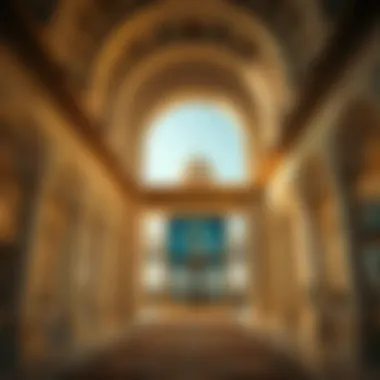
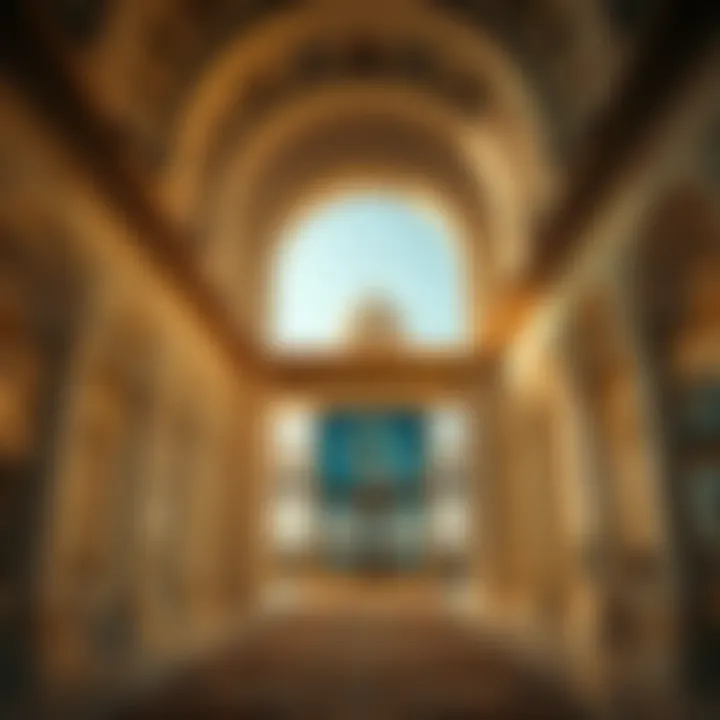
"The crescent's visual appeal combined with cultural ties creates an investment landscape full of potential," remarks a local real estate analyst.
Investors looking to capitalize on the rising interest in crescent-themed developments should keep an eye on upcoming projects, especially those focused on sustainable living and luxury amenities.
Market Demand and Buyer Preferences
As the market evolves, understanding buyer preferences is essential. The crescent not only serves as an architectural accent but also shapes the way buyers perceive value. For many, purchasing a property with cultural symbols embedded into its architecture is more than just a financial investment; it represents a connection to a vibrant community and heritage.
Several trends have emerged within this context:
- Increasing Buyer Awareness: There’s a noticeable trend of homebuyers prioritizing properties that reflect cultural identity and uniqueness. The crescent often stands out as a symbol of inclusion and community.
- Luxury Market Uptick: Properties that incorporate the crescent design within their architectural framework are often priced at a premium. Buyers view these as less commonplace and more luxurious, a factor that can significantly drive up demand.
- Strong Emotional Appeal: Many purchasers are looking to create environments that resonate with their personal values and aspirations. A property symbolizing the crescent can evoke emotions tied to hope and continuity, which can be a decisive factor in the purchasing process.
Crescent in Contemporary Art and Design
The crescent has gone beyond its initial symbolism and woven itself into the fabric of contemporary art and design. This transformation reflects societal values, individual passions, and cultural dialogues that are happening right now. Within Dubai, where modernity thrives against a backdrop of rich tradition, the crescent plays a pivotal role in offering depth and context to artistic expressions and design frameworks. To truly grasp its significance, we must explore artistic representations and how crescent motifs have made their way into home decor, leaving an indelible mark on personal and communal spaces.
Artistic Representations
Art serves as a mirror to our society, and the crescent is no exception. Artists utilize the crescent shape in diverse mediums, from paintings to sculpture, to convey messages ranging from the spiritual to the mundane. This celestial symbol often represents change, renewal, and the passage of time—concepts that resonate deeply in a multicultural city like Dubai. For instance, contemporary artists may create abstract representations of the crescent to symbolize the fusion of history and modern life.
One noteworthy example is the work of Emirati artist Mohammed Kazem, whose art navigates the intersection between cultural heritage and contemporary issues. His pieces often explore the impacts of modernity on traditional symbols, including the crescent. This can provoke discussions about identity, belonging, and the future.
"The crescent is not just a shape; it is a narrative that speaks to both the new and the old," notes prominent art curator Sara Al Naimi.
Moreover, exhibitions across Dubai frequently showcase crescent-themed artworks, bringing together artists of different backgrounds to celebrate unity within diversity. Their creations tell stories that are both personal and universal, prompting dialogue around various interpretations of this symbol.
Crescent Motifs in Home Decor
In the realm of home decor, the crescent shape has infiltrated our living spaces, becoming an emblem of comfort and tranquility. Homeowners are increasingly drawn to crescent motifs because they evoke a sense of calm and serenity, traits highly sought after in a bustling city setting. These motifs translate well across various styles—from minimalist design to vibrant bohemian aesthetics.
Many decor items feature the crescent shape, including:
- Wall Art: Prints and canvases adorned with crescent designs can serve as focal points in a room, often promoting positive energy.
- Lighting Fixtures: Lamps and chandeliers designed in a crescent shape not only illuminate spaces but add a touch of elegance and style.
- Textiles: Cushions, throws, and rugs showcasing crescent patterns create a cozy atmosphere while inviting conversation.
Investors in home decor are recognizing the value these motifs bring. Not only do they add aesthetic appeal, but they also resonate with a broader narrative of cultural significance. As expatriates and locals alike seek to infuse their homes with meaning, the crescent provides a bridge between ancient traditions and contemporary living.
In summary, both artistic representations and home decor embody the crescent's multifaceted nature, revealing the depth of significance it holds in the context of contemporary culture. This symbol, rich with meaning, continues to inspire creativity while enhancing the aesthetic narratives of spaces across Dubai.
Cultural Fusion: The Crescent's Role in Dubai's Diversity
Dubai has become a melting pot where numerous cultures collide, and at the heart of this vibrant tapestry lies the crescent symbol. This icon, with its harmonious blend of cultural layers, not only signifies spiritual beliefs and artistic creativity but also embodies the diverse identities of the communities residing in the city. Exploring this aspect of the crescent reveals its influence not only in religious settings but also within daily life, contributing to a more nuanced understanding of Dubai's cultural landscape.
Embracing Varied Interpretations
The crescent is far more than just an asthetic form; it is a canvas upon which multiple cultural interpretations are painted. In Dubai, Muslims view the crescent predominantly as a religious symbol, marking the significance of the lunar calendar in determining the months of Ramadan and Eid. Yet, expatriates from various backgrounds interpret the crescent differently. For example, Hindus and Christians might view it as a general sign of hope and new beginnings.
- Symbol of Unity: This duality creates a dialogue between communities. The crescent can be a shared emblem, a neutral ground that fosters unity amid cultural differences. It's akin to a bridge linking people with diverse perspectives.
- Celebration of Differences: The crescent motif is commonly incorporated in art and architecture, highlighting unique cultural attributes. Perhaps a local artist might use the crescent as a focal point in an underground music venue or an upscale gallery showcasing contemporary art. This not only adds depth to the artistic narrative but reinforces the idea of a culturally enriched environment.
It is the ability of the crescent to embody these varied meanings that enables it to thrive in a multi-ethnic city like Dubai. The symbol inspires a sense of belonging among various groups, reflecting their pride while blending their identities with the emirate's overarching narrative.
Crescent and Community Identity
The crescent serves as a pivotal aspect of community identity in Dubai. Local communities, whether they are long-time residents or recent expatriates, often adopt the crescent as a hallmark of their collective persona. The crescent becomes a badge of honor, representing their unique stories intertwined with the city’s history.
- In Local Narratives: Community celebrations frequently highlight the crescent's symbolism. For example, during the festival of Eid, the crescent shines brightly in decorations across neighborhoods, eliciting warmth, joy, and togetherness among residents. This collective participation becomes a part of the local narrative.
- Real Estate and Community Design: In real estate, architects and urban planners incorporate crescent shapes into projects, actively fostering places where these varied identities can converge. The design of parks, community centers, and public art installations captures the essence of unity, enhancing social interaction.
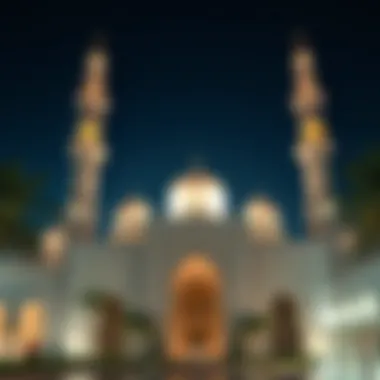
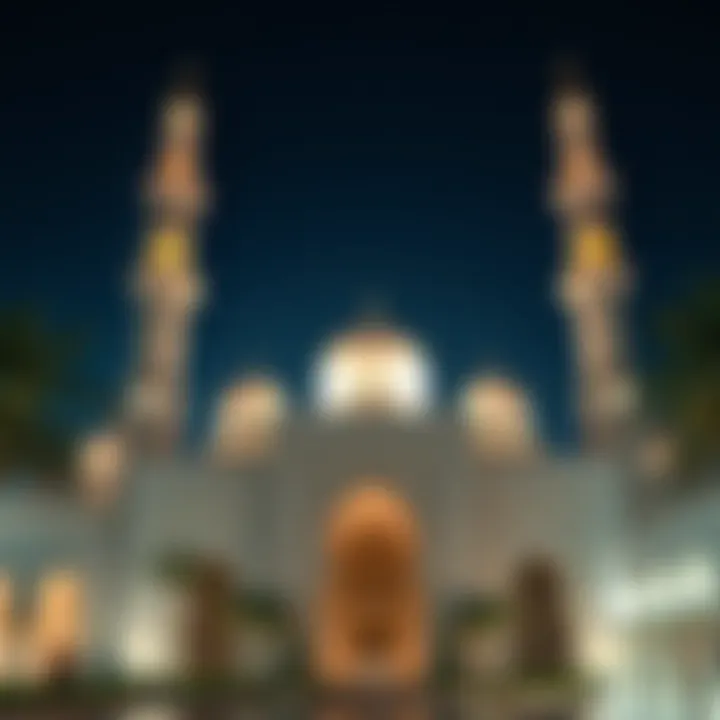
The crescent becomes a reference point around which communities can rally, providing a rich sense of identity and heritage. Essentially, it is more than just a symbol; it is a storyteller that weaves the characteristics of Dubai’s populace into a singular yet multifaceted identity.
"The crescent symbolizes a space where cultures converge, facilitating dialogue among diverse groups, ultimately creating a cohesive yet diverse community."
In summary, the crescent’s role in Dubai's diversity stands as a testament to the power of symbolism in nurturing cultural fusion. Embracing varied interpretations and reinforcing community identity, the crescent presents a unique case study of how symbols can foster both unity and a vibrant diversity that ultimately enhances the city’s charm.
Challenges in Maintaining Crescent Symbolism
The crescent symbol, while rich in cultural heritage, faces various challenges in maintaining its significance amid rapid modernization. As urban environments evolve, the delicate dance between preserving traditional symbols and embracing contemporary aesthetics becomes vital. This section delves into the complexities surrounding the crescent's symbolism, emphasizing the need for a thoughtful approach that respects its historical essence while adapting to the dynamic landscape of modern society.
Modernization and Cultural Preservation
In an era where skyscrapers pierce the sky and technological advancements reshape our lives, the need to safeguard cultural symbols like the crescent is more pressing than ever. Modernization often threatens to obscure the rich tapestry of history that symbols like the crescent represent. In Dubai, where ambitious projects redefine the skyline almost daily, the challenge intensifies. To preserve the crescent's relevance, stakeholders must engage in active dialogue about cultural identity and history.
A few key considerations arise in this ongoing conversation:
- Community Engagement: Involving local communities in discussions about the meaning and importance of the crescent can foster a sense of ownership. Initiatives that invite community members to share their stories and perspectives can enhance the crescent's relevance.
- Sustainable Development: Developers need to consider sustainability, not just in terms of the environment but also in cultural heritage. Integrating the crescent into new designs can create harmony rather than discord between the old and the new.
- Education and Awareness: Educating residents and newcomers about the historical significance of the crescent is critical. Workshops, exhibitions, and events can raise awareness, ensuring that this symbol is not seen merely as a decorative element but as an embodiment of collective identity.
Future Perspectives on the Crescent in Dubai
The crescent symbol stands as a bridge between tradition and modernity in Dubai. As the city continues to flourish, understanding future perspectives on the crescent's role in urban development and culture becomes crucial. This section dives into the projected impact of this iconic symbol on upcoming architectural trends and social narratives in Dubai.
Predictions for Urban Development
In the coming years, urban development in Dubai is expected to grow increasingly aligned with the aesthetics and cultural resonance of the crescent symbol. Developers and city planners are likely to underscore the importance of this shape in new projects, as it reflects the identity and heritage of the region.
- Adaptive Reuse of Existing Structures: There may be a trend towards repurposing older buildings to incorporate crescent elements. With a nod to tradition, these developments can enhance both visual appeal and cultural relevance.
- Sustainable Design: Modern architecture often emphasizes sustainability. Future projects may integrate crescent shapes not merely for symbolism but also to maximize natural light and minimize environmental impact.
- Community Spaces: There is a strong potential for designing public spaces that embody the crescent’s form. Parks and plazas featuring crescent curves can foster community engagement, echoing the inviting aspect of this symbol.
- Smart City Concepts: With the rise of smart cities, the crescent might influence technology in urban planning. This includes utilizing data to enhance the experience of shared spaces shaped by this emblem.
These predictions not only point to aesthetic trends but also highlight how the crescent can serve functional needs as Dubai continues to evolve.
Potential Shifts in Cultural Symbolism
As new generations emerge and the city's demographics shift, the interpretation of the crescent will likely undergo transformations. Here are a few anticipated developments in cultural symbolism related to the crescent:
- Globalization and Fusion: Dubai's cosmopolitan nature can lead to a blending of cultures. As expatriates settle in, the crescent may begin to take on layered meanings, embraced by various communities while retaining its historical significance.
- Artistic Interpretations: Future artists and designers may redefine the crescent symbol in their work, reflecting contemporary issues or advancements in technology. This could include digital art, interactive installations, and even fashion, each narrating a unique story rooted in that familiar shape.
- Community Identity: As Dubai grows, the crescent might serve as a unifying emblem for its diverse residents. Neighborhoods could adopt this symbol to foster community pride – a reminder of shared spaces and cultural respect.
- Increased Awareness: Educational initiatives may highlight the crescent’s significance, connecting younger generations with their cultural roots. Schools, local organizations, and community centers could promote discussions that focus on the crescent's relevance in both the past and the present.
"The crescent, in its graceful arch, holds the stories of civilizations and the dreams of future generations."
Overall, the future perspectives on the crescent in Dubai suggest a harmonious blend of tradition and innovation. The ongoing dialogue about its meaning will play a crucial role in shaping the city's urban landscape and cultural narrative.
Culmination: The Crescent as a Dual Symbol
The crescent symbol, prominently featured in various cultural contexts, has come to embody a multitude of meanings. This article has navigated through its historical roots, religious implications, and architectural significance, painting a vivid picture of its dual nature. The crescent does not merely serve as a decorative motif; it resonates deeply with collective identities and aspirations. Here, we delve into its role as a unifying emblem across cultures and its tangible impact on real estate across urban landscapes.
Unifying Cultural Narratives
The crescent stands as a beacon of unity among diverse cultures. From its significance in Islamic tradition to its influence in modern art and design, it stitches a tapestry of shared beliefs. Amidst a fast-paced, ever-changing world, the crescent provides a sense of belonging, harkening back to shared history and cultural narratives.
The symbolism reaches beyond mere decoration; it creates connections. Cities like Dubai showcase the crescent in various forms, from its architectural designs to visual arts. This approach not only honors tradition but also fosters community dialogue, enriching social narratives. As individuals engage with these symbols, they find common ground, sparking conversations about identity, heritage, and modernity.
- The crescent connects people through:
- Shared celebrations, like Eid, which embody communal values.
- Artistic events that celebrate its representation in contemporary forms.
- Urban spaces designed to reflect cultural stories.
Thus, understanding the crescent’s role in unifying narratives is crucial for fostering communal ties in societies. It urges us to ponder the underlying stories connected to this symbol – stories that deserve telling and exploration.
Impact on Real Estate and Identity
In today’s challenging real estate market, understanding symbols like the crescent can significantly impact buyer and investor decisions. The crescent, as it relates to properties and developments, often signals not only aesthetic value but cultural worth, enhancing property desirability.
When properties incorporate the crescent in their architecture or branding, it attracts buyers looking for a deeper connection with their homes. This desire often stems from a need to integrate cultural identity into the living space. Investors want to tap into this sentiment. Here are a few insights into how the crescent influences real estate:
- Crescent-inspired developments often draw higher interest from expatriates and locals, eager to connect with their heritage.
- Cultural districts that celebrate the crescent create unique selling points that differentiate them from standard developments.
- Brand identity for real estate firms can leverage the crescent to show commitment to cultural respect and heritage.



